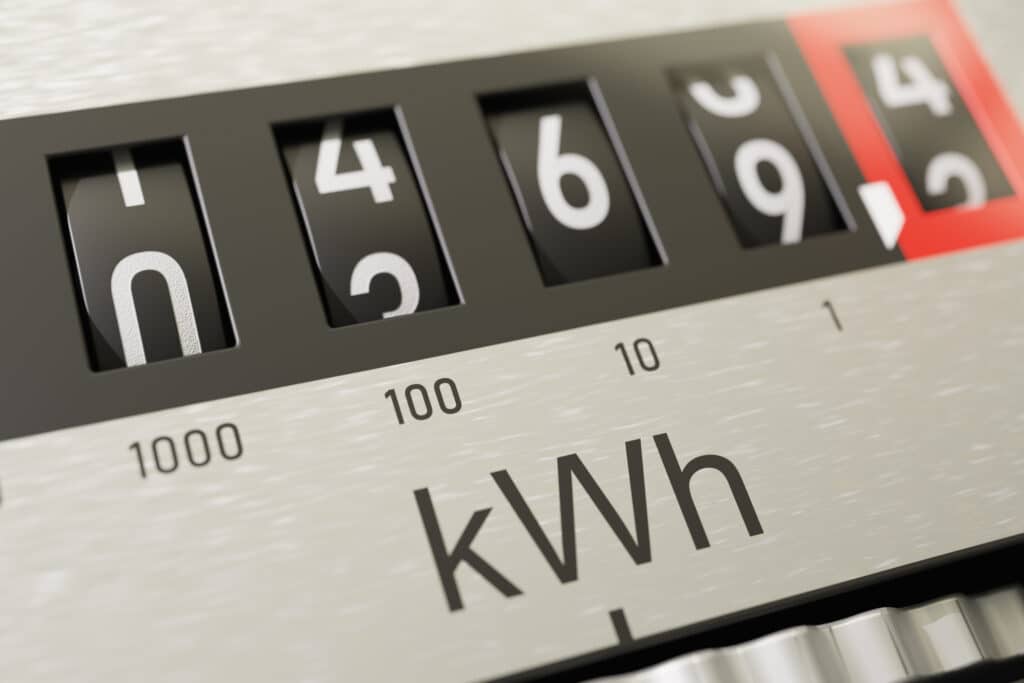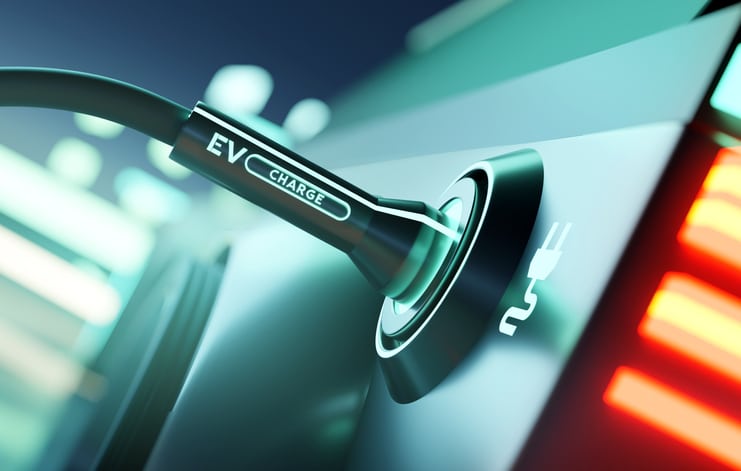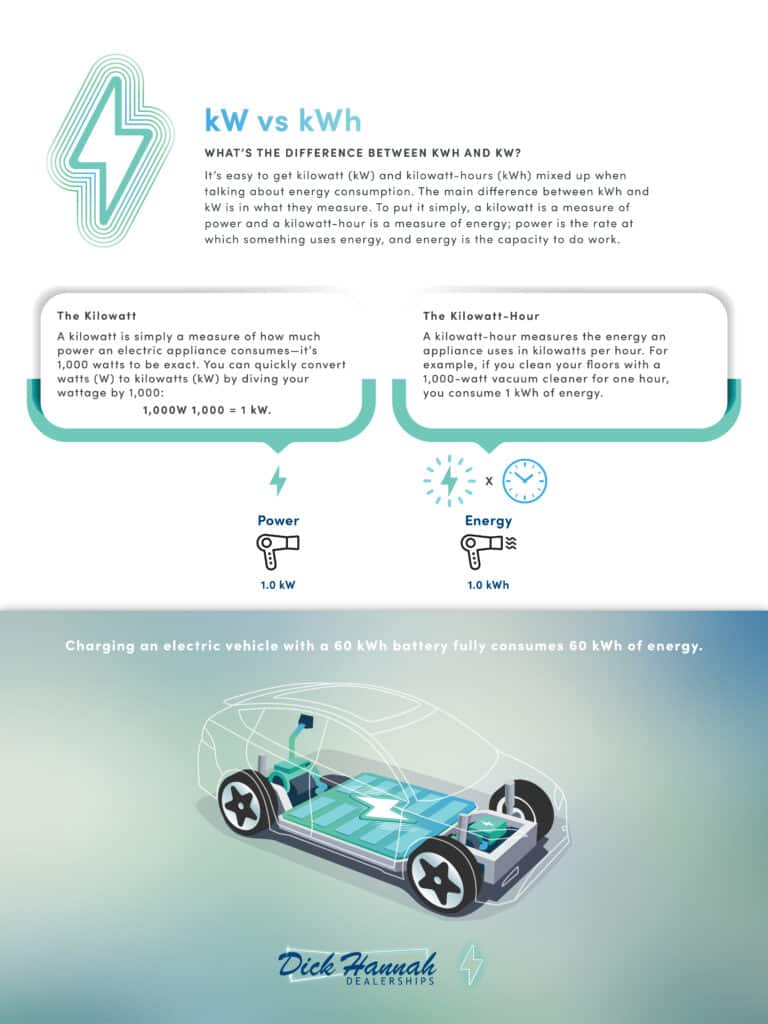What is kWh for Electric Cars?
August 31, 2023

Most driving language that we use today is based on gasoline cars because for most of auto history gasoline was king. Terms like MPG (Miles per Gallon) and skills like reading a gas gauge are common knowledge for most people. As of today, most cars on the road are still run on gasoline, so that may be all you need to know for now. But what do you need to know in the future about electric vehicles? As more and more electric cars are on the road, it is important to break down new ideas that you may be less familiar with. The range on an EV is calculated differently than a traditional gas vehicle.
A Window Into EV Charging
Charging an electric vehicle (EV) or any electronic device can seem like a bit of magic. We plug in the device, and somehow, energy flows into it, replenishing its power supply. But what’s really going on during this process? To understand it, we need to delve into some key terms and concepts, one of which is “kWh,” a unit you’ll often encounter when exploring the world of EVs. It stands for kilowatt-hour and is used to measure an EV’s battery capacity and energy consumption. But let’s break it down and demystify the science behind these units.
What is a watt?
At its core, a watt (W) is a unit of power. It’s named after James Watt, a Scottish inventor whose advancements in steam engine technology were pivotal during the industrial revolution. He’s also known for coining the term horsepower, which is still widely used today to denote the power output of engines.
But what does a watt actually represent? It’s defined as the rate of energy transfer equivalent to one joule per second. In simpler terms, if you imagine electricity as water flowing through a pipe, the wattage would be the speed at which the water is flowing. This flow rate represents the speed at which energy is consumed or produced. So when you see a device rated at, say, 60 watts, it means that device uses 60 joules of energy every second it’s in operation.
What is a kilo?
“Kilo” is a prefix that we use in various contexts, often meaning a thousand. You’ve probably encountered it in terms like “kilogram” or “kilometer,” where it’s used to denote one thousand grams or one thousand meters, respectively.
When we’re talking about electricity, “kilo” holds the same meaning. A kilowatt, then, is simply 1000 watts. So if you see an appliance rated at 2 kilowatts, it means that the appliance uses 2000 joules of energy per second when operating at full capacity.
These concepts are fundamental to understanding the world of electric vehicles and their charging infrastructure. Knowing what a watt and kilowatt represent gives us insight into the energy consumption of EVs and how charging stations deliver power to these vehicles. As we move forward into a future where EVs become more prevalent, having a basic understanding of these units will become increasingly important.
What is a kWh?
Firstly, kWh stands for kilowatt-hour. It’s a unit of energy used to measure the amount of electrical energy consumed over time. A kilowatt-hour represents the energy consumed by a 1,000-watt appliance running for one hour. In the context of electric cars, a kilowatt hour (kWh) is used to measure the capacity of the battery. It represents the amount of energy that the battery can store and is used to estimate the driving range of the car. Chargers also output energy in kWh increments.
Imagine you’re throwing a party and you decide to use your newly purchased state-of-the-art electric sound system to entertain your guests. The sound system comes with a powerful amplifier, rated at 1000 watts (which is equivalent to 1 kilowatt, given that “kilo” means thousand).
Now, think of the watt as a rate of energy consumption, like how fast water flows out of a faucet. This 1000-watt amplifier, when turned on full, is like a faucet that can pour out 1000 units of energy every second.
How Do You Calculate kWh Vs. Kw?
Kilowatts (kW) and kilowatt-hours (kWh) are related, but they measure different things. A kilowatt is a measure of power, which is the rate of energy use or production at a given moment. A kilowatt-hour, on the other hand, is a measure of energy, representing the amount of energy consumed or produced over time.
If you know the power of an appliance in kilowatts and how long it’s running, you can calculate the energy it uses in kilowatt-hours. The formula is simple:
Energy (kWh) = Power (kW) × Time (hours)
For example, if you run a 2 kW heater for 3 hours, it uses 2 kW × 3 hours = 6 kWh of energy.
KWH for Car Batteries
When it comes to electric cars, the battery’s capacity is often given in kilowatt-hours. This is a measure of how much energy the battery can store, and therefore, how far the car can travel on a full charge.
For instance, if a car has a battery capacity of 60 kWh and the car’s energy consumption is 15 kW (or 15 kilowatts per hour), you would calculate the range as follows:
Range (hours) = Battery Capacity (kWh) / Energy Consumption (kW)
So for our example, the car could theoretically run for 60 kWh / 15 kW = 4 hours.
However, the actual range of an electric vehicle will also depend on many other factors such as driving conditions, speed, temperature, use of air conditioning or heating, and more. So this calculation gives a rough estimate and the actual mileage may vary.
Decoding MPGe: A Metric of Comparison
Miles Per Gallon Equivalent (MPGe) is an invaluable metric for anyone considering an electric vehicle. Introduced by the U.S. Environmental Protection Agency (EPA), it allows a straightforward comparison between the energy consumption of EVs and the fuel efficiency of traditional gasoline-powered cars.
But how does it relate to kWh, a unit we commonly associate with EVs? Well, the EPA has defined one gallon of gasoline as equivalent to 33.7 kWh of electrical energy. So, when an EV is rated at, say, 100 MPGe, it implies that the vehicle can travel as far as a gasoline car would on a gallon of fuel, but using only 33.7 kWh of electricity.
For a prospective buyer, understanding MPGe can help you make informed decisions about the efficiency and potential running costs of different EV models. While MPGe offers a great way to compare energy efficiency between electric and gasoline vehicles, remember that actual costs will depend on the price of electricity in your area.
In essence, MPGe helps bridge the gap between the familiar world of miles-per-gallon and the emerging landscape of electric vehicles. By providing a standard for comparison, it enables us to navigate this new terrain with a bit more confidence and understanding.
EV Efficiency
When considering an electric vehicle, one of the most crucial factors to look at is efficiency. Unlike traditional gas-powered vehicles, where the focus often lies in horsepower or engine capacity, the conversation around EVs is all about range and energy consumption.
The driving question is: How far can you go on a single charge?
Big Battery = More Range
A common misconception is that the bigger the battery (in kilowatt-hours, or kWh), the better the car. While it’s true that a larger battery can store more energy and thus provide a greater range, it’s not the only factor that determines an EV’s efficiency.
Consider this – if two electric vehicles have the same size battery, but one uses energy more efficiently, the more efficient EV will have a longer range. This is because it can travel farther on the same amount of energy. It’s much like how a more fuel-efficient gas car can travel farther on a single tank of gas.The efficiency of an EV is typically measured in Wh/mi (watt-hours per mile), which tells you how many watt-hours of energy the car uses to travel one mile. The lower this number, the more efficient the car.
However, a larger battery usually does mean a longer range, all other things being equal. So, in that sense, “Big Battery = More Range” holds true. For example, if you have two similar EVs and one has a 60 kWh battery while the other has an 85 kWh battery, the EV with the 85 kWh battery will likely have a longer range. But remember, bigger batteries are also heavier and more expensive. So there’s a trade-off between battery size, vehicle weight, cost, and range. Therefore, when looking at EVs, consider not just the battery size, but also the vehicle’s energy efficiency and how it matches your driving habits and needs.
So, while the mantra “Big Battery = More Range” is a good starting point, remember that EV efficiency is a complex balance of many factors. In the world of electric vehicles, it’s all about getting the most out of every kilowatt-hour!
Charging and Variable Efficiency
Charging an electric vehicle isn’t quite as simple as filling up a gas tank. Unlike the steady flow of gasoline into a tank, charging an EV efficiently involves understanding a few key factors.
The rate at which an EV can be charged varies depending on the power output of the charging station and the vehicle’s battery management system. Charging too quickly can generate heat and degrade the battery over time, whereas charging too slowly may not be practical for drivers who need to get back on the road.
Variable efficiency comes into play because the efficiency of an EV isn’t constant – it can change based on various factors like driving conditions, temperature, and battery charge level. For instance, driving at high speeds, in cold weather, or with a nearly full or nearly empty battery can decrease efficiency.
So, charging your EV to the optimal level and understanding how different conditions affect your car’s efficiency can help you get the most out of your battery and extend your driving range.
When More is Better
In the world of electric vehicles, more is often better when it comes to battery capacity and charging infrastructure. A larger battery typically means a longer range, allowing you to travel greater distances on a single charge. This can be especially valuable for long trips or for drivers who don’t have regular access to charging stations.
Similarly, more charging stations and faster chargers make owning and operating an EV more convenient. Public charging infrastructure is growing rapidly, making it easier for EV drivers to find a charge when they need one. And the development of faster chargers means that drivers can spend less time waiting for their vehicle to charge and more time on the road.
However, “more” is not always better when it comes to charging speed. Charging a battery too quickly can heat it up and degrade its performance over time. Therefore, while fast charging is convenient for topping up quickly, it’s usually better for the battery’s lifespan to charge slowly and steadily, particularly when charging to full capacity.
So, when it comes to electric vehicles, more capacity, more efficiency, and more charging options are usually better – but only when balanced with proper charging habits and an understanding of how to maximize your EV’s performance.
Charger kW Rating
When you’re diving into the world of electric vehicles (EVs), one thing you’ll quickly notice is that not all chargers are created equal. Chargers come in all shapes and sizes, and their power ratings, measured in kilowatts (kW), can drastically affect how quickly they can recharge an EV’s battery. Let’s break down the main categories:
Slow (standard) chargers are rated at between 3 kW and 6 kW (Level 1)
These are the most common type of EV chargers and are often found in residential settings. They’re perfect for overnight charging. For instance, a car with a 60 kWh battery would take roughly 10 to 20 hours to fully charge from empty with a slow charger. It’s a bit like charging your smartphone – plug it in at night, and it’s ready to go in the morning.

Fast chargers are rated at between 7 kW and 22 kW (Level 2)
Fast chargers are typically found in public charging stations, like shopping centers, or for home installations where faster charging times are required. They can significantly reduce charging time compared to standard chargers, generally taking anywhere from 3 to 9 hours to fully charge a 60 kWh battery. This makes them a convenient option for topping up your battery while you shop or during your workday.
Rapid chargers are rated at 50 kW and up (Level 3)
These are the chargers that really live up to their name. Rapid chargers can often be found at dedicated charging stations along major highways and are designed to get you back on the road as quickly as possible. They can charge a 60 kWh battery to about 80% in as little as 30 minutes. However, it’s worth noting that frequent use of rapid chargers can put more strain on the battery due to increased heat and stress. While this does degrade your battery’s health, it is fairly minor and is comparable to normal battery aging. Rapid charging is best used for longer trips when quick charging is essential.
Conclusion
We hope this guide has been helpful in understanding more about charging an electric vehicle. When considering an electric vehicle, it is important to consider not just the battery size, but also the vehicle’s energy efficiency and how it matches your driving habits and needs.
Understanding the various charger ratings and their appropriate uses can help you make the most of your EV experience. Remember that while rapid charging can be a lifesaver on long trips, slow and steady charging is generally better for the health of your battery in the long run.
Ready to charge forward and purchase an electric vehicle? At Dick Hannah, we have a wide range of electric vehicles to suit every lifestyle. Whether you’re looking for a compact city car or a family-sized SUV, our knowledgeable team can help you find the perfect EV to meet your needs. Check out our EV car listings today and take the first step towards a greener, more efficient future.
Contact Us
